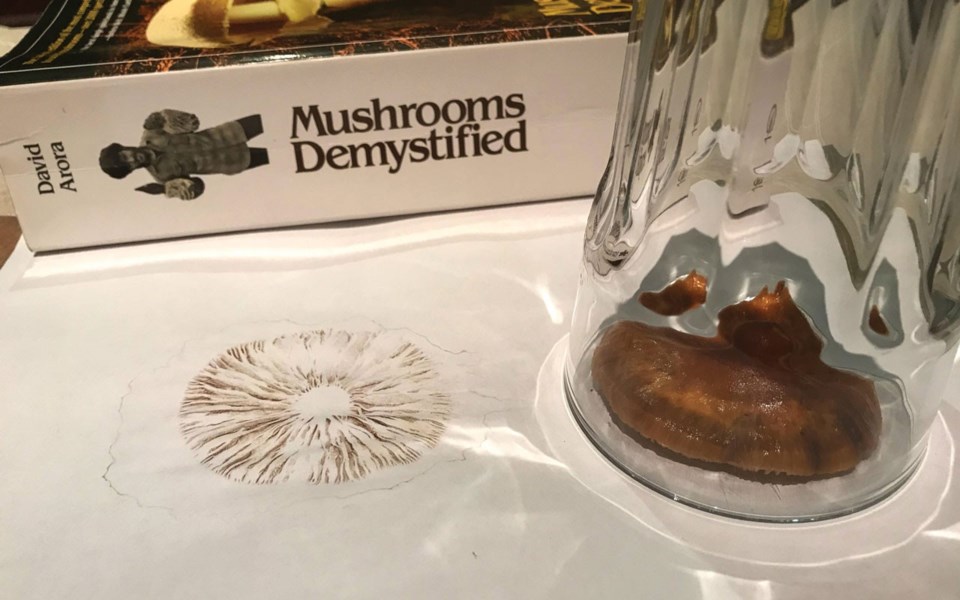If you've walked through the forest lately, you may have noticed mushrooms sprouting up around every corner. Mushrooms are actually the reproductive structure, or fruiting body of fungi, like apples are the fruiting body of apple trees.
While apple trees reproduce by means of their apple seeds, mushrooms reproduce by means of microscopic reproductive units called spores. These spores are much simpler in design than seeds and usually consist of only a single cell as small as one micron, or one-thousandth of a millimetre.
The primary function of the mushroom fruiting body is to disperse spores and help the fungus spread. Not every spore will be lucky enough to land in a favourable environment. Those fortunate few that do will grow fine fungal filaments also known as hyphae, which will mate with compatible partners to create a fertile mycelium, the cobweb-like underground network which forms the major living component of the fungi. As the mycelium breaks down organic matter, it uses the nutrients to rapidly expand, and then eventually condense the hyphae into knots of tissue that gradually develop into a new fruiting body.
In addition to helping fungi reproduce, spores can also help us properly distinguish the delectable edibles from the dangerous wild mushrooms. To create a spore print, take the cap of a mushroom and place it right side up on a white or black piece of paper. Cover the mushroom with a glass or bowl to allow the spores to fall naturally. After two to 24 hours a visible pattern in a distinct colour should emerge on the paper.
Spore prints can be a useful differentiating factor for many mushrooms. One example is the Shaggy Parasol, a popular edible with white spores, and a similar Chlorophyllum molybdites, colloquially named the Vomiter, with olive to green spores.
This mushroom mix-up is one of the most common causes of mushroom poisoning in North America, as both mushrooms have gills that may appear white and look nearly identical, so the only certain way to differentiate them besides genetic testing is by taking a spore print. The Vomiter hasn't been found in Whistler to date, but there is always a possibility that new fungi can show up. For example, potentially poisonous fungi can be imported along with plants for landscaping. Never rely on the fact that a poisonous fungi has not yet been recorded in an area to keep you safe from lookalikes.
You can never be too careful when foraging for wild mushrooms. Creating a spore print is an easy and necessary step that all mushroom collectors should take to aid in identification. All mushrooms worth identifying should have a spore print collected, but all mushrooms that you consider eating truly must have a spore print collected.
Learn all about our local wild mushrooms at the 2019 Fungus Among Us Mushroom Festival on October 18 and 19. Purchase your tickets online at www.whistlernaturalists.ca before they are all sold out! This year's event schedule:
Oct. 18, Friday, 7:30 p.m.: Talks by Gurus ($10). Oct. 19, Saturday, 8:30 a.m. to 12 p.m.: Walks with Gurus ($20), 12:30 to 2 p.m.: Gourmet Tasting with Chef Bruce Worden ($40), 2:30 to 4 p.m.: Mushroom Display (free).




